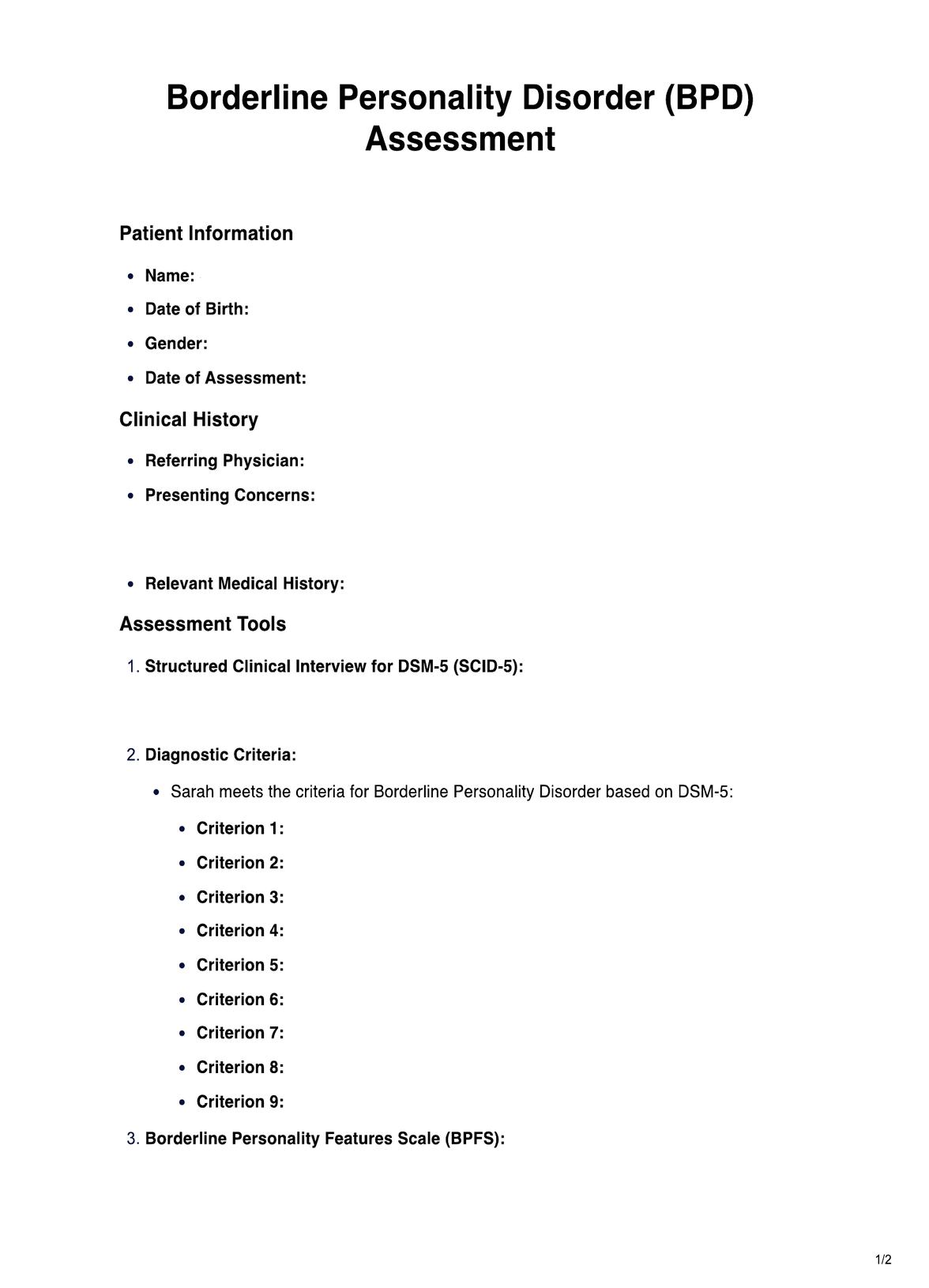People with BPD may exhibit 9 key symptoms, including difficulty regulating emotions, unstable relationships, impulsive behaviors, and distorted or poor self image-image. These behaviors can often harm one's social life, making it essential to identify these symptoms.

BPD Test
Get access to a free BPD Test and example. Learn how to conduct the test and help patients with their recovery.
BPD Test Template
Commonly asked questions
Therapists often avoid BPD due to the risk of patients lashing out in response to perceived criticism. This creates an environment of fear intense anger and uncertainty, making it difficult for them to treat patients with this condition effectively.
To test if you have BPD, you should participate in a psychological evaluation with a mental health or healthcare professional. This assessment typically includes an interview, questionnaires, and a medical history, which may help to diagnose common symptoms of the disorder.
EHR and practice management software
Get started for free
*No credit card required
Free
$0/usd
Unlimited clients
Telehealth
1GB of storage
Client portal text
Automated billing and online payments











